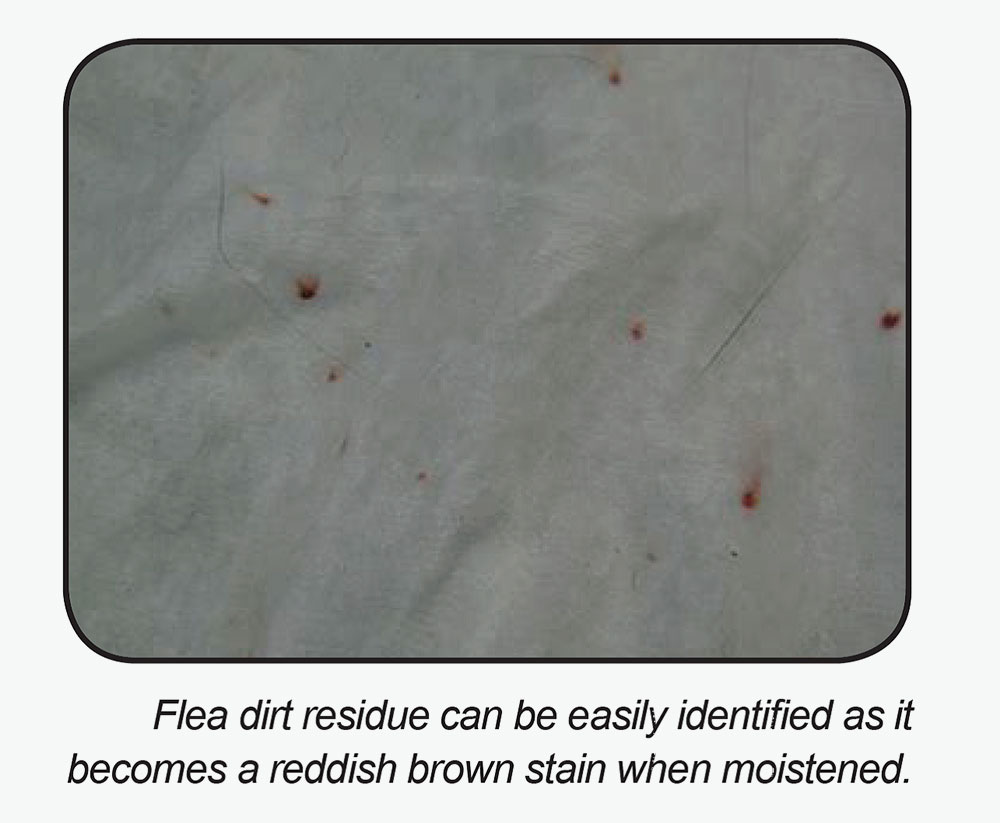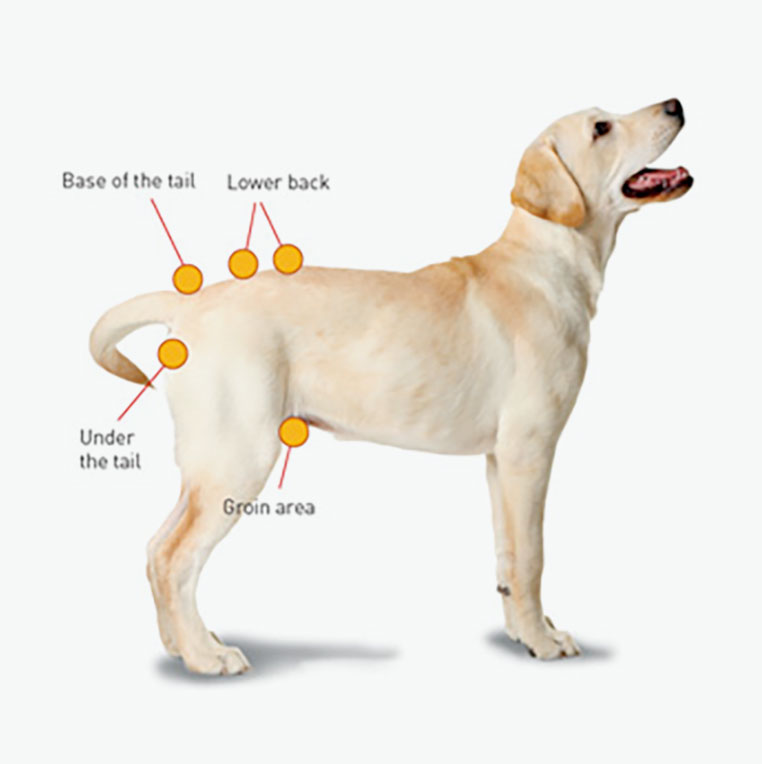Fleas are the most common, most troublesome parasite of cats and dogs. They are blood sucking parasites that feed from any animal that comes by, including dogs, cats, wildlife and even people. These tiny insects' lifecycle ensures their survival through all weather conditions and can lead to a population explosion when conditions are warm and humid. Importantly seeing fleas on your pet is a problem of the environment they live in as well as the individual.
Flea bites result in skin disease through irritation that may result in discomfort and distress for your pet. Unfortunately some dogs and cats develop a hypersensitivity or an allergy to flea saliva. For these animals even a few bites may lead to disease as the irritation is magnified.
Finding fleas in your pet
Adult fleas, when present, are found by parting the coat near the base of the tail using either your hands or a flea comb. Most fleas will move or jump when disturbed.
If no fleas are seen the next step is to examine for flea dirt, these are dark, pepper-like particles on the surface of your pet’s skin and coat. To find these flea droppings simply moisten a cotton ball, part your pet’s fur and place the cotton ball on the skin over the rump. The particles will attach and turn reddish brown when moistened.
Finally recognising the predictable location of skin disease caused by fleas on your pet will indicate the likelihood that fleas are present in your pet’s environment even if no evidence is found. This is irritation and hair loss in the lower back and tail region in dogs. In cats this skin disease is often more generalised.

Treat before you see a problem!
It's much easier to prevent the build-up of fleas in the environment rather than eradicate an infestation. This is because fleas are not specific to who they feed from and are prolific breeders. Regular use of control measures for the environment and preventative treatments on your pets minimises the chance of population growth and therefore any disease.
Fleas are one important consideration when deciding which preventative treatment is chosen for your pet. Other parasite diseases which should be considered include heartworm, gastrointestinal worms, mites, and ticks. If you notice fleas on your pet, use a product such as Moxiclear on your pet that is fast acting and works by coming in contact with fleas. By not requiring fleas to bite, Moxiclear also limits further irritation to your pet as well as stopping environmental flea egg contamination.
If you notice fleas on your pet, make sure you also read our article ‘How to get rid of fleas in your house’.

Picture descriptions will be here

